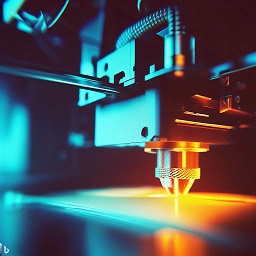3D Printing
3D printing is the process of creating 3-dimensional objects using an additive, such as a plastic (as opposed to a subtractive, such as a CNC machine).
Process to 3D Print a Design
- Create or download a 3D design, typically as an STL file.
- "Slice" the design with a slicer to produce a g-code file.
- Load the g-code file to the printer
Tips:
- Closely monitor the print as it begins and check on it periodically
- Clean the printer bed between prints with a small amount of rubbing alcohol and a microfiber cloth
- A light dusting of cheap hairspray can improve adhesion, especially for glass beds
- Each filament will specify temperatures and other conditions required for successful prints
- Clean the printer bed between uses with a small amount of alcohol and a microfiber cloth
3D Printing Terminology
- G-code file: A file that contains the step-by-step instructions
- Raft: A horizontal mesh printed before the first layer to improve bed adhesion or strengthen an otherwise weak base structure. Causes a rough finish on the bottom layer. Often used with ABS filament to prevent warping.
- Slicer: Software that converts a 3D model into layer-by-layer print instructions.
- STL file: A "stereolithography" file that defines a set of 3-dimensional design in a layer-by-layer fashion.
3D Printing Resources
- Breaks'n'Makes provides general advice and entertainment for 3D printing enthusiasts
- Eunny covers Tinkercad for use in 3D printing projects
- Make Anything YouTube Channel has a lot of fun experiments and projects, plus a great community of helpful enthusiasts.
- MakerBot Thingiverse has thousands of free, downloadable 3D designs.
- Thomas Sanladerer's YouTube channel has a lot of excellent introductory resources for 3D printing.
- Ultimaker Cura is a free slicer that works with most printers.
Deeper Knowledge on 3D printing

Acrylonitrile Butadiene Styrene (ABS) Filament
3d printing with ABS filament

MakerBot Thingiverse
A resource for free 3D printable designs

Ender 3 Pro 3D Printer
A small, reliable 3D printer appropriate for home use